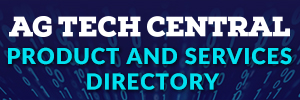
Databases built up from thousands of images are being used to develop algorithms for grain classification. Photo: ZoomAgri
MACHINE vision is making its way into the Australian grain industry as part of a global trend which is seeing image databases guide aspects of quality control.
The journey has been a long one, and started in Australia in 2009 with Sydney-based start-up Indyn investigating the possibility of assessing samples to Grain Trade Australia standards.
In 2014, Western Australia’s Cooperative Bulk Handling engaged Danish company FOSS to develop a grain assessment tool, but an announcement from either company on where that got to is yet to be seen.
Since then, Argentinian company ZoomAgri has started working commercially with seed company InterGrain, and maltsters including Coopers in Adelaide.
Two South Australian companies, Cropify and GoMicro, are also turning heads.
While AI is being adopted at pace in the meat, horticulture and other food industries, the uptake in grain has been slow as the value of the human eye cannot, it seems, be replicated entirely by the machine.
In an occasional series of stories over coming weeks, Grain Central is taking a look at what technology is being used, and why, in the AI space.
On GTA, DAFF radar
GTA standards are the benchmark for Australian exports of cereals, canola, and pulses, as well as for domestic trade.

GTA CEO Pat O’Shannassy.
GTA chief executive officer Pat O’Shannassy said GTA and the Federal Department of Agriculture, Fisheries and Forestry were “strategically aligned” and working together to support innovation by establishing supporting industry national standard, frameworks and guidelines compatible with AI.
“These will provide criteria that will allow innovative companies to be able to further develop and refine their AI technology so that it is acceptable and capable of assessing grain to industry and government requirements,” Mr O’Shannassy said.
“That goes from assessing grain for defects to certifying the grain meets specific import-country requirements.”
“This work between the Australian Government and industry is important to ensure we are well positioned to assess the capability of and accept new technology, and to encourage the development of new technology that offers significant financial and operational benefits for the industry as a whole.”
Mr O’Shannassy said modernising grain assessment was a critical step towards maintaining the reputation of Australia’s grain supply chain and will reduce the industry’s exposure to risk and reputational damage.
“Australia’s grain supply chain is on the cusp of either capturing or missing substantial advancements in the assessment of grain through the uptake of emerging new technology including AI.”
Mr O’Shannassy said a reduction of subjective assessments where possible and in the cost from several parts of the grain sampling and assessment task is achievable.
“This will benefit the broader value chain in meeting both industry quality requirements, and government biosecurity and phytosanitary requirements.”
The framework being developed by GTA and DAFF will ensure grain-assessment technology is accepted by industry and government to provide standards and consistent analysis and certification.
Mr O’Shannassy said assessing and rolling out the AI technology is proving to be a complex issue.
It involves reviewing the technology on offer, performing a standard assessment of all technology against industry the industry standard and common grain reference samples, and implementation and the ongoing operations and technical maintenance of this technology.
Bulk handlers tentative
Inquiries to CBH, GrainCorp and Viterra about their involvement with AI have yielded a response from Viterra only.
As a sign that AI may well be getting close to commercial use at some Viterra sites, the company is currently recruiting for an automation manager “to further develop the use of technology” in use at South Australia’s biggest bulk handler by far.
“Viterra is looking at opportunities to increase the efficiency of our supply chain for the benefit of our grower and end use customers, including investing in innovation and the use of smart technology,” Viterra general manager operations Gavin Cavanagh said in a statement.
“We are exploring a number of visual recognition technologies for subjective classification, taking a considered approach to ensure they suit our grower and end use customers’ needs before implementation.”
Barley, lentils lead the way
Early indications are that malting barley and lentils are the two commodities lending themselves most readily to early adoption of AI in grain.
With malting, its use in a controlled industrial process means the maltster knows exactly where to set quality parameters, while lentils as a whole food can be graded largely on visual properties that cameras can easily detect.
Some niche crops, including soybeans as being graded by PB Agrifood with the GoMicro app, also appear well suited to assessment with AI.
Canola and wheat appear to be trickier for the AI brain to see, canola because its visuals give so little away, and wheat because of its wide genetic diversity within segregations, and the long list of reasons it can be downgraded.
Mr O’Shannassy said the fact that AI can only detect defects based on samples it has seen before is a limiting factor, particularly from harvests like the one just gone.
“One of the issues is teaching it parameters,” he said.
Between and within seasons, aspects of a grain sample can vary hugely, on everything for size of weed seeds to strains of fungal disease.
Failure to detect such variations can create risks for human-consumption, stockfeed and export markets.
“Last harvest is certainly where we would have said we haven’t seen all this before from the one season.”
While those in various parts of the supply are interested in AI technology being developed to assess some or all aspects of grain quality, it seems the experience of a trained human eye will remain invaluable for years to come.
ON WEDNESDAY: Read about ZoomAgri


HAVE YOUR SAY